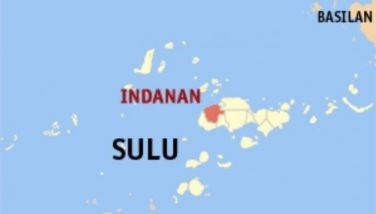Parol-smashing used to cap Pampanga fest
December 19, 2005 | 12:00am
CITY OF SAN FERNANDO — Imagine Pampanga’s parol makers smashing each other’s masterpiece after the annual giant Christmas lantern festival, which was again launched here last Saturday.
The scenario would be lamentable, considering the beauty of the giant lanterns, traditionally 18 feet in diameter and unfailingly spectacular in the complexity of their dancing colors.
But that was how it used to be.
Professor Robbie Tantingco, head of the Center for Capampangan Studies of the Holy Angel University in Angeles City, said smashing the losing lanterns was how the Christmas festival ended in the years before World War II.
"The Christmas lanterns were perched on bamboo poles and paraded from the cathedral downtown through the street now known as Consunji. After the parade, they used the poles as some kind of sword (to smash their rivals’ lanterns)," he said.
He said the winning lantern remained untouched during the revelry.
The lantern entries then, according to Tantingco, were much smaller and shaped like stars or animals.
Due to lack of historical documents on the festival’s history, Tantingco said the only reliable sources of information are the descendants of the famous lantern makers.
He said the Estanislao family dominated lantern-making years ago, followed by the Davids. In recent times, the Quiwa family has taken over.
It was from the descendants of these families that Tantingco pieced together the history of the crowd-drawing lantern festival.
Tantingco said the festival started as a religious event in Bacolor as early as the 19th century when the locals commemorated the Feast of Virgen de la Naval.
"It was to celebrate the victory of the Catholic Spaniards against the Protestant Dutch invaders years earlier," he said.
Tantingco recalled that in the 19th century, only Pampanga and Manila celebrated the Feast of Virgen de la Naval.
"Manila celebrated it in October, the month of the Holy Rosary, while Pampanga commemorated it in November," he said.
"But Capampangans preserved the lanterns they made for La Naval to be used again during the Christmas season," added Tantingco, an Outstanding Capampangan awardee for culture and arts.
When the capital of Pampanga was transferred from Bacolor to San Fernando in 1904, he said the traditional lantern festival moved with it, too.
"That was the time when the Manila-Dagupan railway was already operational and triggered an economic boom in the sugar industry in San Fernando. This economic prosperity led to the Christmas lanterns being built much bigger and evolving in the 1960s to the proportions of the giant lantern festival that we know today, " he said. — Ding Cervantes
The scenario would be lamentable, considering the beauty of the giant lanterns, traditionally 18 feet in diameter and unfailingly spectacular in the complexity of their dancing colors.
But that was how it used to be.
Professor Robbie Tantingco, head of the Center for Capampangan Studies of the Holy Angel University in Angeles City, said smashing the losing lanterns was how the Christmas festival ended in the years before World War II.
"The Christmas lanterns were perched on bamboo poles and paraded from the cathedral downtown through the street now known as Consunji. After the parade, they used the poles as some kind of sword (to smash their rivals’ lanterns)," he said.
He said the winning lantern remained untouched during the revelry.
The lantern entries then, according to Tantingco, were much smaller and shaped like stars or animals.
Due to lack of historical documents on the festival’s history, Tantingco said the only reliable sources of information are the descendants of the famous lantern makers.
He said the Estanislao family dominated lantern-making years ago, followed by the Davids. In recent times, the Quiwa family has taken over.
It was from the descendants of these families that Tantingco pieced together the history of the crowd-drawing lantern festival.
Tantingco said the festival started as a religious event in Bacolor as early as the 19th century when the locals commemorated the Feast of Virgen de la Naval.
"It was to celebrate the victory of the Catholic Spaniards against the Protestant Dutch invaders years earlier," he said.
Tantingco recalled that in the 19th century, only Pampanga and Manila celebrated the Feast of Virgen de la Naval.
"Manila celebrated it in October, the month of the Holy Rosary, while Pampanga commemorated it in November," he said.
"But Capampangans preserved the lanterns they made for La Naval to be used again during the Christmas season," added Tantingco, an Outstanding Capampangan awardee for culture and arts.
When the capital of Pampanga was transferred from Bacolor to San Fernando in 1904, he said the traditional lantern festival moved with it, too.
"That was the time when the Manila-Dagupan railway was already operational and triggered an economic boom in the sugar industry in San Fernando. This economic prosperity led to the Christmas lanterns being built much bigger and evolving in the 1960s to the proportions of the giant lantern festival that we know today, " he said. — Ding Cervantes
BrandSpace Articles
<
>
- Latest
- Trending
Trending
Latest
Trending
Latest
Recommended































